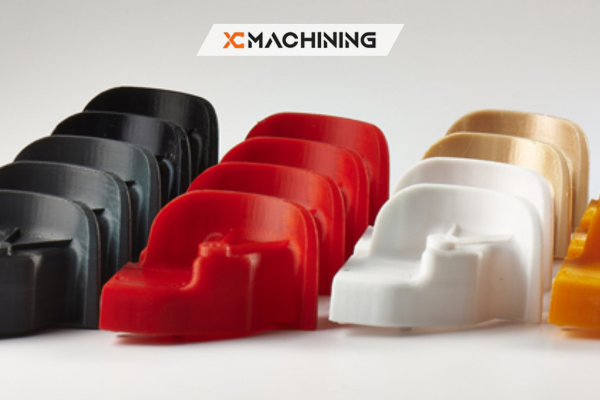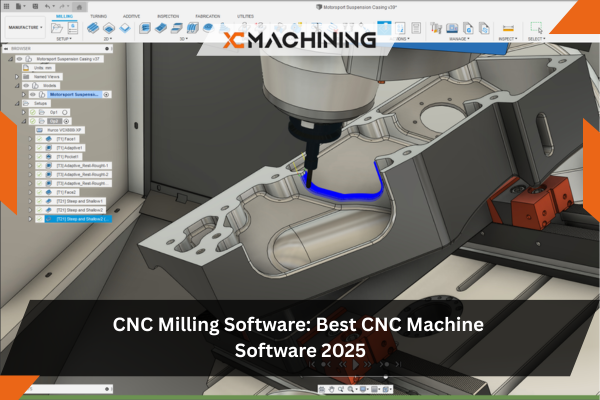What This Guide Covers
Choosing the right materials for 3D printing is the most critical decision that determines whether your project succeeds or fails. With hundreds of material options available—from basic plastics to advanced composites, metals, and even concrete for construction applications—making the optimal choice requires understanding both material properties and application requirements.
In this comprehensive guide:
- Understanding different 3D printing material categories
- Key properties to evaluate when selecting materials
- Material selection framework for various applications
- Common mistakes and how to avoid them
- Emerging materials and future trends
Whether you’re printing consumer products, functional prototypes, or exploring materials for 3D printing in construction and architecture, this guide provides practical insights from a decade of materials engineering experience across diverse 3D printing applications.
Inhaltsübersicht
Understanding 3D Printing Material Categories
After 10 years working with 3D printing materials across industries—from aerospace components to the future of 3D printing in construction—I’ve learned that material selection is rarely straightforward. Last month, a product designer came to me frustrated that their prototype kept failing. They’d chosen PLA because it was “easy to print,” but their application needed impact resistance and outdoor exposure tolerance. We switched to ASA, and suddenly everything worked perfectly.
Die right materials for 3D printing depend entirely on your specific application requirements. Let me break down the major categories:
Thermoplastics (FDM/FFF Printing)
Most common 3D printing materials for consumer and industrial applications:
PLA (Polylactic Acid):
- Easiest material to print, minimal warping
- Biodegradable and plant-based
- Low strength and heat resistance (softens at 140°F)
- Best for: Prototypes, decorative items, educational projects
- Not suitable for: Functional parts, outdoor use, anything requiring durability
Real experience: A client printed architectural models in PLA for presentations. The models looked great indoors, but when left in a car on a sunny day, they warped beyond recognition. This taught them that even “simple” material choices have consequences.
ABS (Acrylonitrile Butadiene Styrene):
- Higher strength and heat resistance than PLA
- More challenging to print (warping issues)
- Better chemical resistance
- Best for: Functional prototypes, jigs and fixtures, automotive components
- Limitation: Requires heated bed, produces fumes during printing
PETG (Polyethylene Terephthalate Glycol):
- Balance of strength, flexibility, and ease of printing
- Excellent layer adhesion
- Food-safe options available
- Best for: Mechanical parts, water bottles, protective cases
- Personal favorite: I use PETG for about 40% of my functional prints due to its versatility
Advanced Engineering Plastics:
- Nylon: Exceptional strength and flexibility, excellent wear resistance
- Polycarbonate: High impact strength, heat resistance to 300°F
- ASA: UV-resistant alternative to ABS for outdoor applications
- TPU: Flexible, rubber-like material for gaskets and flexible parts
Resin Materials (SLA/DLP/MSLA Printing)
For high-detail applications requiring smooth surfaces:
Standard Resins:
- Smooth surface finish directly from printer
- Brittle compared to thermoplastics
- Best for: Miniatures, jewelry masters, dental models
- Limitation: UV-sensitive, can become brittle over time
Engineering Resins:
- Tough resins: ABS-like properties for functional parts
- Flexible resins: TPU-like flexibility
- High-temperature resins: Heat deflection to 450°F
- Castable resins: Burn out cleanly for investment casting
Real application: I worked with a dental lab using specialized biocompatible resins for surgical guides. The precision (±0.025mm) and surface finish were impossible to achieve with FDM printing, making resin the only viable choice despite higher material costs.
Metal Materials (SLM/DMLS/Binder Jetting)
For industrial and high-performance applications:
Common metal powders:
- Stainless steel 316L: Corrosion resistance, medical applications
- Aluminum AlSi10Mg: Lightweight aerospace components
- Titanium Ti6Al4V: Biomedical implants, aerospace
- Inconel 718: High-temperature turbine components
- Tool steel: Injection mold inserts, tooling
Cost reality: Metal 3D printing materials cost $80-$400 per kilogram compared to $20-$80 for thermoplastics. A aerospace engineer I know spent $12,000 on material alone for a single titanium bracket prototype—but it was the only manufacturing method that could produce the required complex internal geometries.
Construction Materials (Large-Format Printing)
Expanding into 3D printing in construction industry:
As 3D printing in architecture and construction gains momentum, specialized materials are emerging:
Concrete-based materials:
- Standard printable concrete: Modified cement with accelerators
- Fiber-reinforced concrete: Enhanced strength and crack resistance
- Geopolymer concrete: Sustainable alternative to Portland cement
- Earth-based materials: Clay and soil mixtures for sustainable building
Material requirements for construction printing:
- Must remain pumpable for extended periods
- Quick setting to support subsequent layers
- Sufficient strength for structural applications
- Weather resistance and durability
Real insight: I consulted on a 3D printing in construction project where the concrete mixture had to be reformulated three times. The first batch set too quickly and clogged the nozzle. The second set too slowly and collapsed under its own weight. The third iteration—with carefully balanced accelerators and fiber reinforcement—worked perfectly. This illustrates how critical material selection is for specialized applications.

Key Properties for Selecting Right Materials for 3D Printing
When choosing materials, evaluate these critical properties against your application requirements:
| Eigentum | Warum es wichtig ist | Example Decision |
|---|---|---|
| Mechanische Festigkeit | Determines load-bearing capacity | Choose nylon for gears vs PLA for models |
| Hitzebeständigkeit | Maximale Betriebstemperatur | PC for engine components vs PLA for toys |
| Chemische Beständigkeit | Exposure to solvents, oils, chemicals | PETG for chemical containers vs PLA |
| UV Resistance | Outdoor exposure durability | ASA for outdoor fixtures vs ABS |
| Flexibilität | Required bend or deformation | TPU for phone cases vs rigid materials |
| Schlagzähigkeit | Ability to absorb sudden force | Nylon for tool handles vs brittle resins |
| Oberfläche | Aesthetic and functional requirements | Resin for display models vs FDM |
| Biokompatibilität | Medical or food contact safety | Medical-grade resin vs standard materials |
| Environmental Stability | Moisture absorption, weathering | ASA for outdoor vs PLA for indoor |
| Kosten | Material price vs performance value | PLA for prototypes vs expensive metals |
Material Selection Framework
Use this decision framework to identify the right materials for 3D printing for your specific project:
Step 1: Define Your Application Requirements
Functional requirements:
- What loads or stresses will the part experience?
- Operating temperature range?
- Chemical exposure?
- Outdoor or indoor use?
- Required lifespan?
Example: A client wanted to print custom brackets for a marine environment. Initial choice of PLA would have failed within months due to moisture absorption and UV degradation. We selected ASA with UV stabilizers, and the brackets have performed flawlessly for 2+ years in saltwater spray conditions.
Step 2: Identify Critical Properties
Rank properties by importance for your application:
For a functional gear:
- Wear resistance (most critical)
- Stärke
- Dimensional accuracy
- Kosten
- Printability
For an architectural model:
- Surface finish (most critical)
- Detail resolution
- Kosten
- Print speed
- Strength (least critical)
Step 3: Match Materials to Requirements
High-strength applications:
- Consider: Nylon, polycarbonate, carbon fiber composites, metals
- Avoid: PLA, standard resins
High-temperature applications (>200°F):
- Consider: Polycarbonate, PEEK, PEI, high-temp resins
- Avoid: PLA, ABS, PETG
Outdoor/UV exposure:
- Consider: ASA, polycarbonate, UV-resistant resins
- Avoid: PLA, ABS, standard resins
Flexibility required:
- Consider: TPU, TPE, flexible resins
- Avoid: PLA, ABS, standard rigid materials
Precision and detail:
- Consider: Resin (SLA/DLP), fine-nozzle FDM
- Avoid: Large-nozzle FDM
Step 4: Consider Secondary Factors
Printability:
- Easier materials (PLA, PETG) = lower failure rate, faster iteration
- Difficult materials (nylon, polycarbonate) = require experience and proper equipment
Post-processing needs:
- Some materials require support removal, sanding, or finishing
- Resins require washing and UV curing
- Consider labor costs and time
Equipment compatibility:
- Not all printers can handle all materials
- High-temp materials need all-metal hotends
- Abrasive materials (carbon fiber) require hardened nozzles
Cost analysis:
Example calculation I did for a client:
- PLA option: $25 material cost, prints in 8 hours, 70% chance of success = $36 expected cost per successful part
- Nylon option: $45 material cost, prints in 10 hours, 50% chance of success (higher difficulty) = $90 expected cost per successful part
For their 100-part production run, PLA’s easier printability actually made it more cost-effective despite the application being borderline for PLA’s capabilities. They added a safety factor to the design instead of using a more expensive material.
Common Material Selection Mistakes
Mistake #1: Choosing Based on Price Alone
The problem: Selecting the cheapest material without considering total project cost.
Real consequence: A startup printed 500 enclosures in cheap PLA to save $200 on material costs. Within 3 months, 40% had cracked or warped from normal use. They spent $3,000 reprinting in PETG and dealing with customer complaints. The $200 material savings cost them $2,800 plus reputation damage.
The solution: Calculate total cost including failure rates, reprints, and potential warranty claims. Sometimes the more expensive material is actually cheaper.
Mistake #2: Over-Engineering Material Selection
The problem: Specifying exotic materials when standard options would work.
Real example: An engineer specified carbon fiber nylon for a simple bracket that experienced minimal stress. The exotic material cost 6x more than standard nylon and offered no performance benefit for the actual application. Standard nylon would have exceeded requirements.
The solution: Match material properties to actual requirements, not theoretical maximums. Don’t pay for capabilities you don’t need.
Mistake #3: Ignoring Environmental Factors
The problem: Not considering operating environment during material selection.
Real failure: Interior automotive parts printed in PLA warped during summer when cabin temperatures exceeded 140°F. The designer hadn’t considered the extreme temperature range vehicles experience.
The solution: Always ask: What temperatures will the part experience? Indoor or outdoor? Chemical exposure? Moisture? UV light?
Mistake #4: Not Testing Before Production
The problem: Committing to large production runs without material validation.
Expensive lesson: A company ordered $8,000 worth of a new composite material for a production run before testing. The material printed beautifully but shrunk 3% during cooling—far more than standard materials. Parts didn’t fit assemblies. They scrapped the entire batch.
The solution: Always print test parts in your chosen material. Validate dimensional accuracy, strength, and other critical properties before scaling up.
Mistake #5: Forgetting About Post-Processing
The problem: Selecting materials without considering finishing requirements.
Real scenario: A client chose a material that printed beautifully but couldn’t be sanded, painted, or bonded with standard adhesives. Their finishing process had to be completely redesigned, adding unexpected time and cost.
The solution: Consider the entire workflow: printing, support removal, finishing, assembly. Some materials are difficult or impossible to work with using standard methods.
Emerging Materials and Future Trends
The landscape of right materials for 3D printing is constantly expanding:
Advanced Composites
Current development:
- Carbon fiber reinforced thermoplastics combining strength of metals with weight of plastics
- Continuous fiber embedding for ultimate strength
- Kevlar-reinforced materials for impact resistance
Application: I tested carbon fiber PETG for drone frames. The material delivered 300% strength increase over standard PETG while adding only 15% weight—perfect for weight-critical applications.
Sustainable and Biodegradable Materials
Growing category:
- PLA variants from agricultural waste
- Algae-based filaments
- Recycled plastic filaments
- Wood-fiber composites
Market driver: Environmental concerns pushing development of sustainable materials, especially for 3D printing in architecture and construction where material volumes are substantial.
Multi-Material and Gradient Materials
Innovation frontier:
- Single prints combining rigid and flexible materials
- Gradient properties (hard exterior, soft interior)
- Conductive traces embedded in plastic parts
Future potential: Parts with properties that vary throughout the structure, impossible with traditional manufacturing.
Construction-Scale Materials
Rapid advancement in 3D printing in construction:
- High-strength printable concretes
- Recycled aggregate formulations
- Insulated wall materials (thermal properties built-in)
- Self-healing concretes with embedded bacteria
Industry impact: As the future of 3D printing in construction develops, material innovation will be as important as printer technology advancement.

Material Selection by Application Type
Prototyping and Concept Models
Best materials:
- PLA: Fast, easy, inexpensive for non-functional models
- Standard resin: Excellent surface finish for presentation models
- PETG: When prototype needs to be somewhat functional
Priority: Speed and cost over performance
Functional Prototypes and Testing
Best materials:
- PETG, ABS, ASA: General mechanical testing
- Nylon: Wear and durability testing
- Engineering resins: When precision matters
- TPU: Flexibility and impact absorption testing
Priority: Properties matching end-use application
Production Parts and End-Use Products
Best materials:
- Engineering thermoplastics: Nylon, polycarbonate, PEEK
- Engineering resins: Production-grade tough resins
- Metalle: When performance justifies cost
- Specialized materials: Medical-grade, flame-retardant, food-safe
Priority: Long-term reliability and regulatory compliance
Tooling and Manufacturing Aids
Best materials:
- Carbon fiber composites: Strong, lightweight jigs and fixtures
- High-temp materials: Mold inserts and forming tools
- Flexible materials: Soft jaw inserts and grippers
Priority: Tool longevity and dimensional stability
Practical Material Testing Methods
Before committing to production, test materials properly:
Mechanical testing:
- Print standardized test specimens (ASTM D638 tensile bars)
- Test at expected operating temperatures
- Evaluate over time, not just fresh prints
Environmental testing:
- Expose samples to expected conditions (UV, moisture, chemicals)
- Accelerated aging tests
- Temperature cycling
Dimensional validation:
- Measure critical dimensions with calibrated equipment
- Test fit with mating parts
- Monitor dimensional changes over 24-48 hours after printing
Cost validation:
- Track actual material consumption vs estimates
- Calculate failure rates and reprint costs
- Include post-processing time and materials
Schlussfolgerung
Selecting the right materials for 3D printing isn’t about choosing the “best” material—it’s about matching material properties to your specific application requirements while balancing cost, printability, and performance. After a decade of materials engineering across diverse 3D printing applications, I’ve learned that successful material selection requires understanding both the science of material properties and the practical realities of printing and application.
The explosion of available materials—from basic thermoplastics to exotic metals and specialized materials for 3D printing in construction industry—means there’s likely a perfect material for your application. But it also means the selection process requires careful analysis.
Start with your requirements, not with materials. Define what your part needs to do, where it will be used, and how long it must last. Then match those requirements to material properties. Test before committing to production. And remember that sometimes the “advanced” material isn’t the right choice—often a basic, well-understood material properly applied outperforms exotic options.
As the future of 3D printing in construction and other industries continues evolving, material innovation will remain at the forefront of advancement. New materials will enable applications we haven’t imagined yet. But the fundamentals of material selection—understanding requirements, matching properties, and thorough testing—will always be the foundation of successful 3D printing projects.
Choose wisely, test thoroughly, and don’t be afraid to pivot if your initial material choice proves wrong. The right material makes all the difference between a failed experiment and a successful product.
FAQs
1. About the most versatile material that a beginner can print, what do you think?
LA is the easiest to explore because of the low temperature printing range, negligible warping, biodegradability, and high-quality prints. MIC has no heated bed and little smell, and therefore finds application where delicate smells, like in educational settings and at home.
2. What can I use to find out whether a material should be compatible with my 3D printer?
Research your printer in terms of temperature capabilities and build volume, as well as the type of technology. Make sure that your extruder can reach the necessary temperature (190-220), PLA, 2230- 250 °C for ABS, 240- 260 °C, Nylon). Ensure that your printer can handle the type and size of the filament (1.75mm or 2.85mm), and has features such as heated beds in case the material can warp.
3. Which materials are good in high temperatures?
In high-temperature applications, use PEEK or PE, I, or special high-temperature nylons. PEEK is most resistant to temperatures (up to 250 °C continuous use), ABS and PETG moderate (80-100°CC). Take into account the requirements in terms of temperature and the period of exposure.
4. What influence does material choice have on print quality/success rate?
The material selection also affects adhesion of layers, warping, and the surface finish to a large extent. Simple to print materials, such as PLA, have a success rate of above 95, but challenging materials like Nylon may need special conditions and experience. The right selection of material on your application and the selection of printers will lead to an improved result and fewer failed prints.
5. Explain the differences in costs of different 3D materials?
The cost involved in materials is considerably different according to performance and application. LA is usually the least expensive (20-30/kg), with engineering polymers such as PEEK costing up to 300-500/kg. Incorporate the overall project costs, such as your printing time, success rate, and processing requirements, and consider the economics of the materials.





